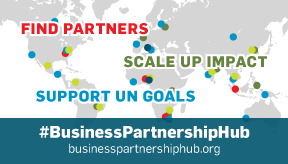“If the United Nations was fully funded, why would we need the Arc or social enterprise”?
To start, let’s take a look at the United Nations. It’s a global, inter-governmental organization working together to combat underlying issues of the world, ranging from peacekeeping and countering terrorism, to promoting human rights and equality, to relieving poverty and disparity. The UN tackles issues so large that not every inhabitant in every corner of the earth can benefit from its governing even though everyone is treated equally.
Digging deeper, how does the UN truly help citizens in rural communities or wealthy countries?

UN Global Outreach Program: uniting social enterprises around the globe that align with UN values to foster a better world for all
Through global outreach programs like UN Global Impact: Social Enterprise and Impact Investing! Not only that, but alongside the United Nations, are programs like the Arc initiative which complement the visions of a better world that the UN is aiming to achieve.
Behind the plethora of global issues lies smaller societal roadblocks. Scaling back from the global scope of things and zooming into a smaller section of the world, the Arc initiative provides budding entrepreneurs the essential skills needed to make their innovative products and ideas flourish. Using these ideas and products, they help to aid themselves and their communities to change; thereby, aiding the UN to create global change, one tiny, yet monumental step at a time. Without social enterprises, the UN will eventually achieve their desired results, but at a great cost: a great cost of time and a great cost of brilliant ideas lost to captivity and lack of support from social enterprises.
Essentially, the United Nations and social enterprises go hand in hand in creating a better world and creating shared value in our society.


















